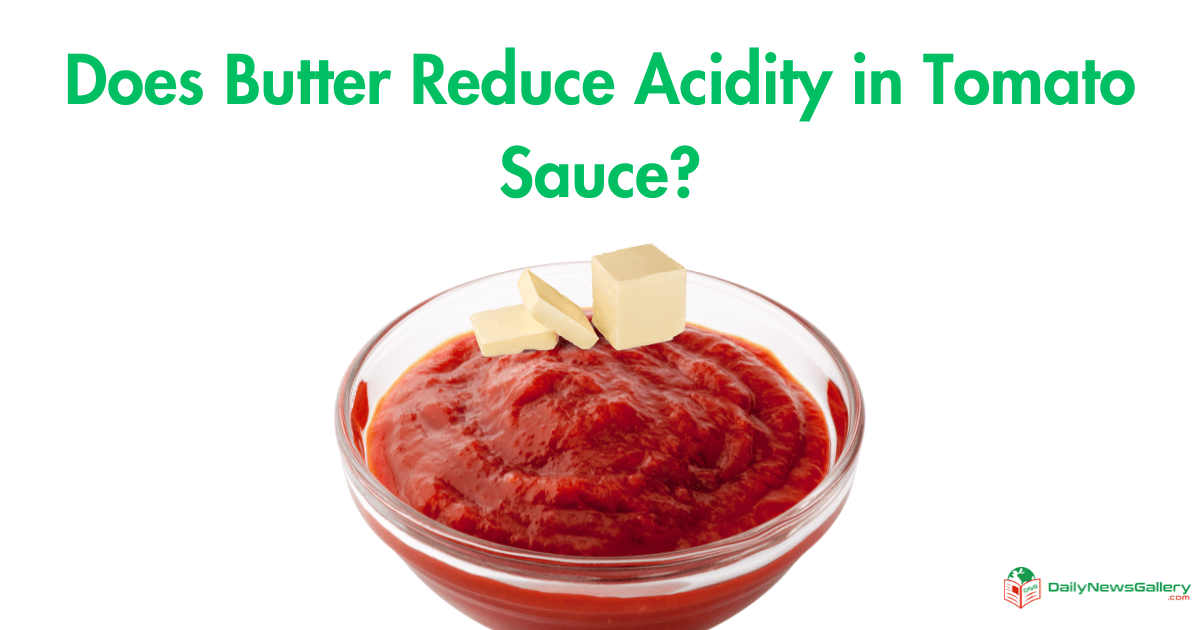
Ah, the joy of homemade tomato sauce! There’s nothing quite like the rich, tangy flavor of tomatoes simmered to perfection. But sometimes, that tang can be a tad too much, making the sauce more acidic than desired.
Over the years, I’ve tried and tested various methods to balance out the acidity in my tomato sauces. Today, I’m sharing my tried-and-true secrets with you.
Does Butter Reduce Acidity in Tomato Sauce?
Yes, adding butter to tomato sauce can help reduce its acidity. The creamy and fatty nature of butter neutralizes the tangy acidity of tomatoes, imparting a smoother, richer flavor to the sauce.
Why Tomato Sauce Can Be Too Acidic
Tomatoes are naturally acidic, and while this acidity can be delightful in many dishes, sometimes it can overpower the sauce, especially if you’re using fresh tomatoes that are not fully ripe.
The type of tomato, the soil it was grown in, and even the canning process can all influence the acidity levels.
My Go-To Methods to Reduce Acidity
Butter to the Rescue
One of the simplest ways I’ve found to cut down on acidity is by adding butter. Butter not only imparts a creamy texture but also introduces a rich, mellow flavor that can counteract the sharpness of the tomatoes.
Just a tablespoon or two melted into your sauce can make a world of difference. It’s like a little magic trick I pull out of my apron pocket!
Baking Soda
This might sound a bit unconventional, but trust me on this one. Baking soda is alkaline, which means it can neutralize the acid in the sauce.
However, a word of caution: use it sparingly. Start with just a pinch, let it simmer, and then taste. If needed, you can always add a bit more, but remember, a little goes a long way. You don’t want your sauce to end up tasting soapy!
Sugar or Carrots
While I’m not a big fan of adding too much sugar to my dishes, a teaspoon or two can help balance out the acidity. If you’re wary of sugar, finely grated carrots are a natural sweetener and can be a great alternative.
They blend seamlessly into the sauce and add a subtle sweetness without altering the tomato flavor.
Additional Tips
- Always taste as you go. Adjusting the flavor is all about balance, and our taste buds are the best judge.
- If you’re using canned tomatoes, opt for high-quality brands. They tend to have a more balanced flavor profile.
- Remember, the longer you simmer your sauce, the more the flavors meld together. So, give it time and let the magic happen.
FAQ
- Why is my homemade tomato sauce so acidic?
- Tomatoes are naturally acidic, and factors like the type of tomato, its ripeness, and the soil it was grown in can influence the acidity levels. Additionally, the canning process for store-bought tomatoes can also add to the acidity.
- Can I use both butter and sugar to reduce acidity?
- Yes, you can use both butter and sugar, but always add in moderation and taste as you go to ensure the right balance of flavors.
- How much baking soda should I add to my sauce?
- Start with a pinch of baking soda and let it simmer. Taste the sauce and add more if needed, but be cautious as too much can give the sauce a soapy flavor.
- Are there natural alternatives to sugar for reducing acidity?
- Yes, finely grated carrots or even a bit of honey can serve as natural sweeteners to counteract the acidity.
- Does the type of tomato used affect the sauce’s acidity?
- Absolutely. Different tomato varieties have varying acidity levels. For a milder sauce, consider using Roma or San Marzano tomatoes.
- Can I use olive oil instead of butter?
- While olive oil can add richness to the sauce, it doesn’t have the same acidity-neutralizing effect as butter. However, it’s a great option for those avoiding dairy.
- How long should I simmer my sauce after adding ingredients to reduce acidity?
- It’s good to let the sauce simmer for at least 20-30 minutes after adding ingredients, allowing the flavors to meld together.
- Does using fresh tomatoes vs. canned tomatoes make a difference in acidity?
- Yes, fresh tomatoes, especially if not fully ripe, can be more acidic than canned ones. However, the canning process can also introduce acidity, so it’s essential to taste and adjust accordingly.
- Can I use other vegetables to reduce acidity?
- Apart from carrots, vegetables like red bell peppers or sweet onions can also add sweetness to the sauce and help balance out the acidity.
- Is there a way to prevent my sauce from becoming too acidic in the first place?
- Choosing ripe, high-quality tomatoes and adding a pinch of sugar or grated carrot during the cooking process can help maintain a balanced flavor from the start.
Cooking is all about experimentation and finding what works best for you. These are the methods that have worked wonders for me over the years.
The next time your tomato sauce is a bit on the tangy side, give one of these tricks a try. Happy cooking, dear readers! And remember, every dish is a reflection of the love and care you put into it.




